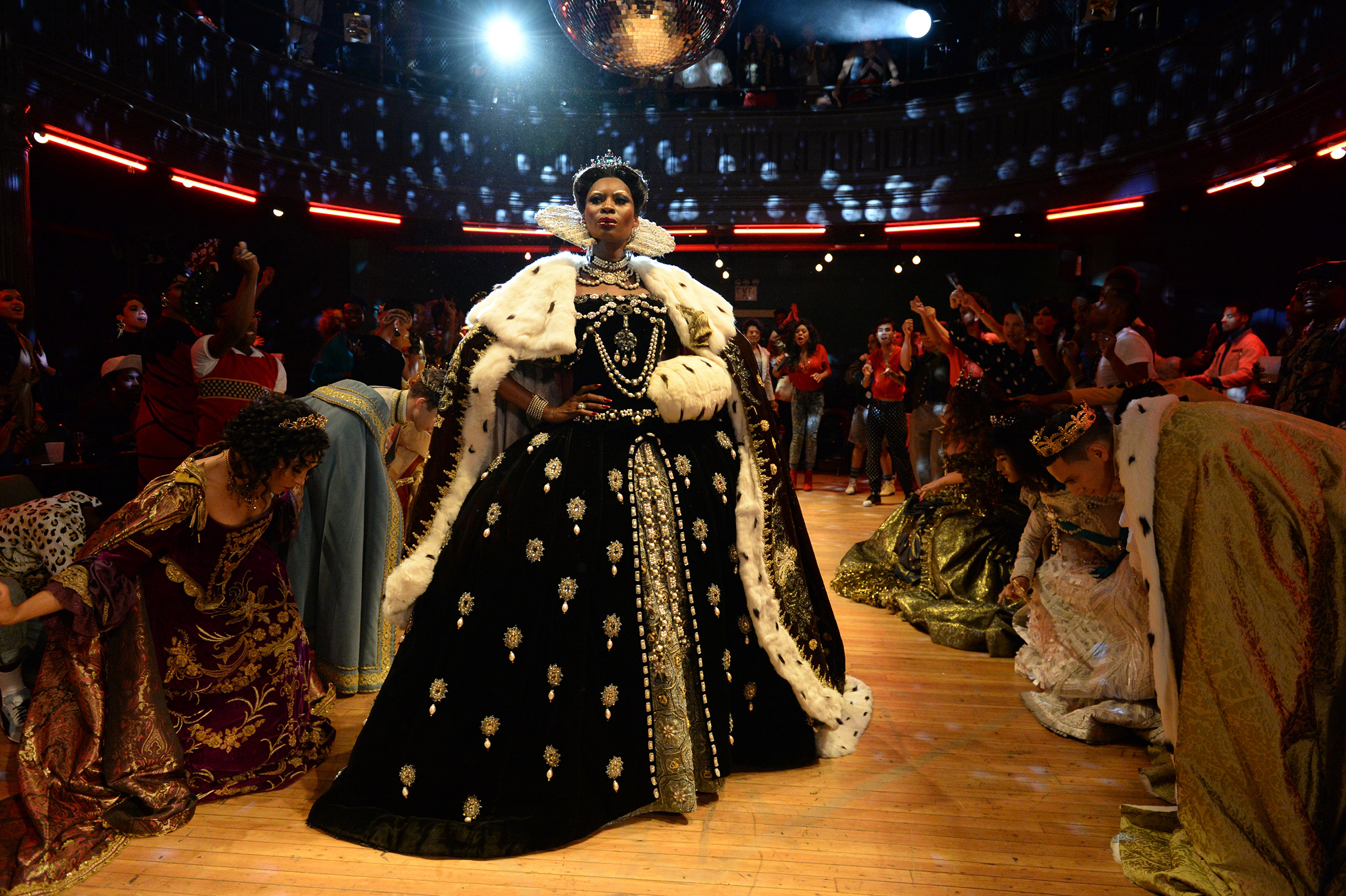
Ryan Murphy embodies what would be considered the producer-auteur, a creator of shows that have a given, recognizable feel. Furthermore, his shows are known for visible queer representation, although how that representation has been analyzed is open for criticism. In a short time, he has produced hits such as Glee, American Horror Story, American Crime Story, and in 2017, co-produced Pose. Based on the African-American drag ball culture of the 1980s, the show was also unique in casting many transgender actors in the roles of transgender individuals, along with a cast of predominantly characters of color (Tiffany). The culture and world of the show are heavily influenced by Jenny Livingston’s landmark documentary Paris is Burning, which first brought mainstream attention to this culture.
Set in the late eighties and early nineties, many of the show’s narrative is structured around the AIDS epidemic, the poverty, homelessness of trans people of color, and the participation of sex work ad its often precarious violence and risk. The main villain of Season One is Elektra Abundance, the mother of the House of Abundance. Elektra is wealthy from her benefactor, a white businessman. Elektra is harsh on her children, berates them for not winning, and often is accused of cheating in the balls. She also prides herself on her extreme femininity and her ability to pass. Elektra dreams of having surgery to become “complete.” After gender confirmation surgery, her benefactor fires her because she no longer has the body she desires. She seeks revenge on him and by default, other people she sees that have kept her from her wealth and traditional femininity. Elektra is portrayed as cold, aggressive, and judgmental of the other transwomen who engage in street sex work.
Elektra’s self-validation is on her looks, her ability to pass, and her measure of success is based on a measure of whiteness, which includes designer clothes, an apartment in uptown, and her feminine mannerisms and grooming. Her villainess is reminiscent of the trope of the wealthy, beautiful, but uncaring mother. When her partner leaves her and denies her money, she enacts revenge on all that have wronged her, including Blanca, a former younger member of her house, who, sick of Elektra’s cold and seemingly uncaring attitude, has “stolen” members of her house to create a new house.
Works Cited
Tiffany, Kaitlin. Ryan Murphy’s Pose will feature ‘the most trans series regular actors ever’ on American TV. The Verge, December 28, 2017. https://www.theverge.com/2017/12/28/16825300/ryan-murphy-fx-pose-series-announced-transgender-cast-directors
Supplemental Reading
Serano, Julia. “Skirt Chasers: Why the Media Depicts the Trans Revolution in Lipstick and Heels”. In Whipping Girl: A Transsexual Woman on Sexism and the Scapegoating of Femininity. 2007, Kindle Ed.
Julia Serano’s Whipping Girl, is part memoir part queer theory, explains how transsexual identities are weaved within gender privilege and the identity of cissexual individuals. (Serano actively uses the terms transsexual to identify herself.) She acknowledges that media representation has a lot to do with it, and currently, depictions of transsexual characters fall into either the “deceptive transsexual” or the “pathetic transsexual.” The deceivers “successfully pass as women, they generally act as unexpected plot twists or play the role of sexual predators who fool innocent straight guys into falling for other “men” (np, Kindle). Whereas the pathetic characters support the “underlying assumption is that the trans woman wants to achieve a stereotypically feminine appearance and gender role” and to not achieve whatever measure this is, or the ability to pass as ultrafeminine is a failure for the character.
Putting this in conversation with the character of Elektra Abundance and the other transwomen in Pose is an interesting one. The merits of Pose are that the characters are fully lived, experienced, and narrators of their own story, but deceiving and passing are major parts of the storylines, especially set in 1980s New York City. Elektra yearns to be a “real woman” and her, like others, often fears violence in being found out. The difference is the gaze and center of the narrative, which acknowledges challenges in passing and the threat of violence associated with it within the story and the characters.
hooks, bell. “Introduction: Race Talk.” From Killing Rage: Ending Racism. New York: Henry Holt and Company, 1995, pp. 1-7.
Hooks explores the anger that black women have been suppressing due to racism and acts of violence. Suppressing rage was a survival strategy: many of us were taught that the repression of our rage was necessary to stay alive in the days before racial integration, we now know that one can be exiled forever from the promise of economic well-being if that rage is not permanently silenced” (14). Popular media may have created a sense of dangerous black rage in the popular white imagination, silencing black voices. Hooks calls for the exploration of this rage. “Confronting my rage, witnessing the way it moved me to grow and change, I understood intimately that it had potential not only to destroy but also to construct” (16). Elektra Abundance faces an intersection of obstacles: living as a black trans woman, a sex worker, and in a dangerous era. Her show of anger and revenge for what has been taken from her puts her at risk for violence against her. Furthermore, her anger towards others in her community, her peers, threatens exile from the community. On the show, her reasons for revenge are also transformed into reasons for her to require solidarity from her community.
Further Reading
Ryan Murphy and Janet Mock on ‘Pose,’ Diversity and Netflix (New York Times)
FX’s Pose: Ryan Murphy in Conversation with Emmy-Nominated Billy Porter
Performative Transformation of the Public Queer in Paris is Burning
Striking a ‘Pose’: A Brief History of Ball Culture
Strike a Pose: Why Ryan Murphy’s new show about voguing is TV at its most fearless
A Beloved Ballroom Queen. A Shocking Murder. Did “Pose” Get It Right?
